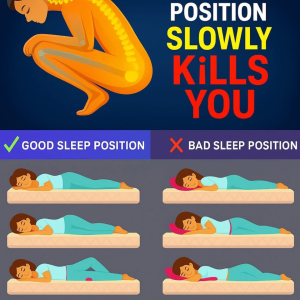
Once you reach your fifties, maintaining good circulation becomes essential for overall health. Poor blood flow, especially to the legs and feet, can lead to long-term heart and vascular problems.
Fortunately, one vitamin—niacin—has shown remarkable promise in supporting blood vessel health and improving circulation.
What Is Niacin?
Niacin, also known as vitamin B3, is a crucial micronutrient that supports energy production, cholesterol balance, and blood vessel function. One of its key benefits is helping blood vessels expand, which promotes better circulation. It also reduces inflammation, assists in repairing blood vessel walls, and regulates how the body uses fats and sugars—all of which contribute to healthier arteries and veins.
Research has shown that niacin can significantly lower triglycerides and boost good cholesterol (HDL) by up to 35%, helping prevent the buildup of plaque that restricts blood flow.
Why Niacin Matters After 50
As we age, our cardiovascular system naturally changes, increasing the risk of blocked arteries and poor circulation. These issues often develop quietly over time. Lifestyle factors such as inactivity and poor diet can make things worse.
Niacin can help counteract these changes. By improving blood flow and reducing arterial inflammation, it supports the heart and vascular system. While more research is needed to confirm the full extent of its benefits in preventing vascular disease, current evidence already points to its powerful protective role for older adults.

Niacin and Mobility
Recent studies have highlighted an exciting connection between vitamin B3 and improved mobility. One form of the vitamin, nicotinamide riboside, was tested on people with peripheral artery disease—a condition that restricts blood flow to the legs. Participants who took the supplement were able to walk farther in six minutes than those who didn’t.
Researchers found that this form of vitamin B3 boosts muscle cell energy and helps repair tissue, making it a potential tool for improving mobility and circulation without invasive treatments. The findings, published in Nature Communications, suggest vitamin B3 could play a key role in maintaining independence and leg strength as we age.
Proven Circulatory Benefits
Poor circulation affects nearly 40% of people over 50, but many cases could be prevented with proper nutrition. Studies have shown that niacin improves flow-mediated dilation—an important measure of how well blood vessels function. It also helps thin the blood slightly, allowing it to move more efficiently through narrowed arteries. These effects make niacin a valuable ally in protecting the heart and slowing the aging process of blood vessels.

Getting Enough Niacin
Niacin is found in many everyday foods, including chicken, turkey, tuna, salmon, peanuts, sunflower seeds, avocados, whole grains, and fortified cereals. The body can also produce small amounts from tryptophan, an amino acid found in eggs, dairy, and other protein-rich foods—provided you get enough vitamins B2 and B6.
For those who need more, supplements are an option. The recommended daily intake is 16 mg for men and 14 mg for women. Higher therapeutic doses—used for managing cholesterol—should only be taken under medical supervision, as excessive niacin can cause side effects such as flushing, itching, or liver issues.
The Bottom Line
Niacin is a simple yet powerful nutrient that supports healthy blood flow, lowers cholesterol, and strengthens the cardiovascular system—especially valuable after age 50. Whether through a balanced diet or doctor-guided supplements, ensuring adequate vitamin B3 intake can help keep your legs lighter, your heart stronger, and your circulation in top form for years to come.




